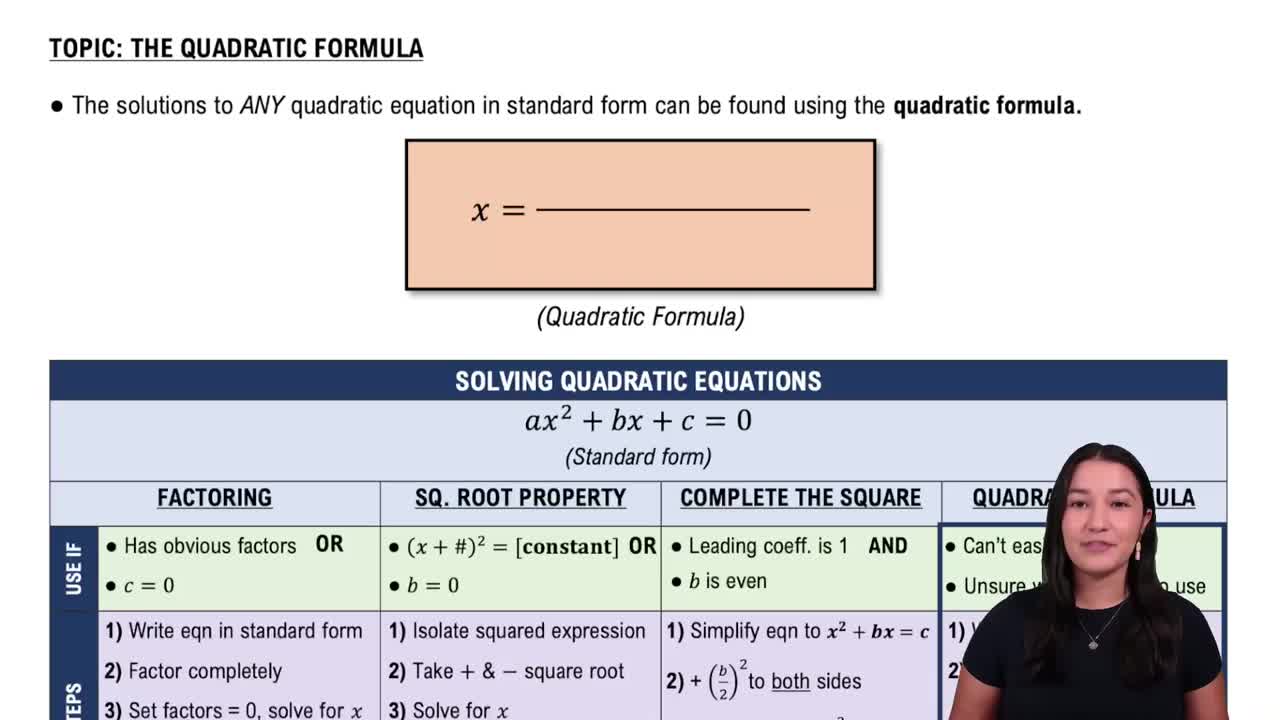Here are the essential concepts you must grasp in order to answer the question correctly.
Inequalities
Inequalities are mathematical expressions that show the relationship between two values when they are not equal. They use symbols such as <, >, ≤, and ≥ to indicate whether one side is less than, greater than, or equal to the other. Understanding how to interpret and graph inequalities is essential for visualizing the solution set of an inequality.
Recommended video:
Quadratic Functions
A quadratic function is a polynomial function of degree two, typically expressed in the form f(x) = ax^2 + bx + c. The graph of a quadratic function is a parabola, which can open upwards or downwards depending on the sign of the leading coefficient (a). In the given inequality, y < 3x^2 + 2, the quadratic function 3x^2 + 2 serves as the boundary for the region defined by the inequality.
Recommended video:
Solving Quadratic Equations Using The Quadratic Formula
Graphing Inequalities
Graphing inequalities involves shading a region of the coordinate plane to represent all the solutions that satisfy the inequality. For a quadratic inequality like y < 3x^2 + 2, you first graph the corresponding equation y = 3x^2 + 2 as a solid or dashed line, depending on whether the inequality is strict (< or >) or inclusive (≤ or ≥). The area below the parabola is then shaded to indicate all points (x, y) that satisfy the inequality.
Recommended video:
 Verified step by step guidance
Verified step by step guidance Verified Solution
Verified Solution



 7:2m
7:2m